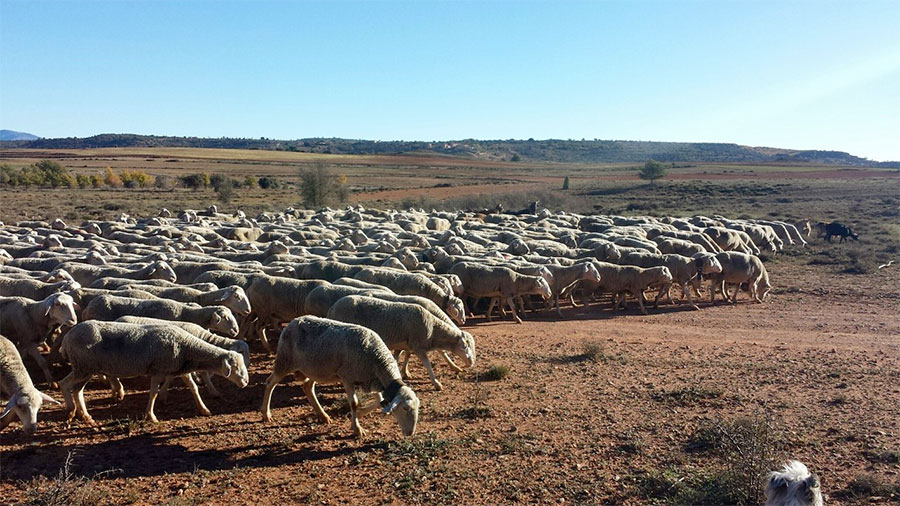Grasslands management
Semi-natural grasslands are an essential part of the European cultural landscape, being hotspots of biodiversity and priority habitats of the European Union (92/43/EEC Directive). However, they are being lost or degraded at a very high rate all over Europe; indeed, more than five million hectares between 1990 and 2013 have been lost (http://www.fao.org/faostat).
These ecosystems result from centuries or millennia of human management adapted to restrictive environmental conditions and their biodiversity depends on the extensive exploitation of forage resources and, more specifically, regular grazing or mowing. Depending on their duration and timing, herbivory and mowing may alter the outcome of competition between plant species within the community in different ways.
Grazing is a selective disturbance that reduces interspecific competition and enhances the species traits pool devoted to resistance strategies to herbivory, the degree of enhancement depending on the grazing intensity. Moreover, different grazers exert different pressure on plant species, related to their browsing strategies and foraging behaviour.
Mowing is instead a non-selective type of disturbance that reduces aboveground phytomass, prevents litter accumulation, and increases species diversity. If carried out in mid-summer, it allows plants a longer period to complete their reproductive cycle, leading to complex trait-determined use of different temporal reproductive niches.

Grasslands are endangered by different drivers mainly related to the modification of traditional management practices and climate change. In Europe, management change is related to processes of intensification or abandonment, with the latter particularly relevant in the Mediterranean mountains. Here, after World War II, the socio-economic processes (industrial development and urbanization in the lowlands and along the coasts, mechanization of agriculture, and intensive cattle-farming in the most favourable areas to maximize food production) triggered the abandonment of rural and mountain areas, which are left to spontaneous vegetation regrowth, such as the expansion of shrublands or forest ecosystems at large scales. At the plant community scale, the cessation of traditional semi-extensive farming or the decrease in herbage use typically induces the invasion of coarse tall grasses with competitive stress-tolerant strategies. This process generally reduces the overall feed value of pastures, negatively affecting the economic sustainability of mountain farming and exacerbating the abandonment trend of the mountain areas.
In addition, the forecasted climate change for the Mediterranean basin (substantial temperature increase and concomitant rainfall decrease) will negatively influence grassland systems, especially the most productive ones and the areas used for grazing by domestic herbivores, with a likely increase of drought-resistant poorly palatable species. Management changes might profoundly interact with the increasing trend of drought, potentially reducing the economic sustainability of semi-extensive farming. This highlights the importance of monitoring the floristic and ecological transformations, and of making management plans in order to implement effective adaptation systems of semi-extensive farming.